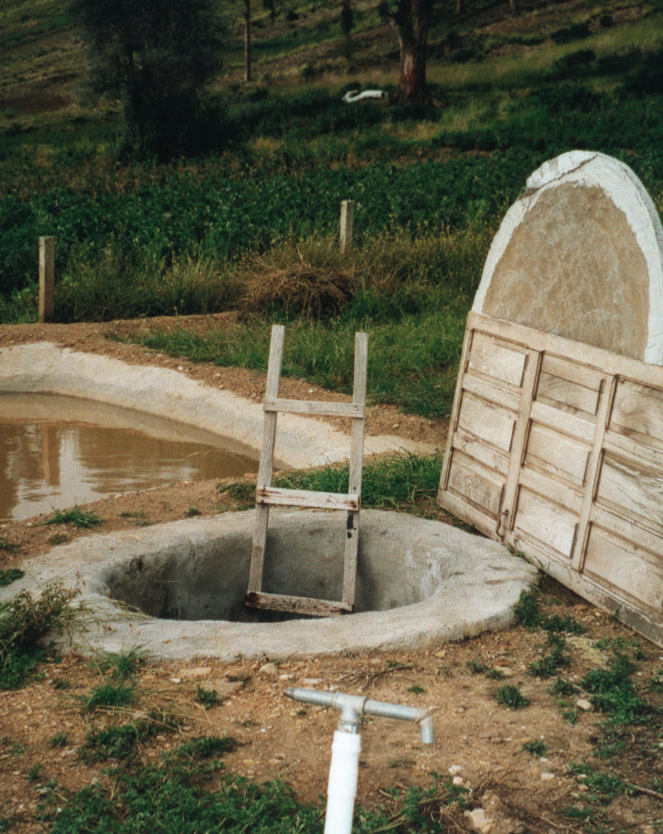Underground tank
Where access to groundwater is limited, rainwater harvesting in underground tanks can be an effective and low-cost alternative. Water stored in the wet season can be used in the dry season and lifted from the tank with a rope pump or with a deep well pump, which can elevate water up to 30 m.
These tanks can be constructed of concrete blocks. The tanks are partly (1.5 m) built below the soil surface. These tanks can store up to 20 000 liters of water, used for domestic use, cultivation.
With regard to the concrete block tanks, 40 community water tanks (supporting a few families each) were implemented successfully. Following this success, another 80 concrete block tanks will be build at household level.
Practica foundation is testing various options for low-cost storage and groundwater recharge like the "Reed cement tank" and the "Tube recharge".
Suitable conditions
The area should be suitable for rainwater harvesting. Depending on the design the capacity of the tank varies from 3 500 to 20 000 liters.
| Advantages | Disadvantages/limitations |
|---|---|
| - Low cost alternative to metal or ferrocement tanks. |
- Experience shows that sub-surface tanks often cannot hold enough water for whole dry season. Making bigger berkeds is possible but more difficult and cost is high (unaffordable tank is not replicable on larger scale). - Flotation of the tank may occur in areas with a high groundwater table. |
Construction, operations and maintenance
Basic water quality testing is recommended during the first year, with further testing when water quality is in doubt. E.g. the 'HACH' pillo test, costing about US$ 1 per test. Treatment to manage microbiological quality is also recommended.
Maintenance
- Removal of debris and overhanging vegetation from gutters and the roof (preventing stagnation of water in the gutters) is required. Physical inspection and repairing cracks with cement is also needed.
Costs
- Material costs for EMAS tanks consist of sand and four 50 kg bags of cement for each tank.
- Subsurface ferrocement tanks of 60 m3 costs about US$ 1,900.
- Underground tanks can be high and variable in cost per m3 of storage (averages around US$30-40 per m3 of storage, sometimes a lot more depending on various factors). Sub-surface hemispherical tanks made from stone masonry and bricks/cement in Ethiopia cost in the range of 113 - 219 Euro per m3 of storage including all costs such as trucked water for construction and solidity of construction (more solidly built tanks in clay areas cost more). Therefore costs currently limit the replicability of the technology for poorer families and potential to scale things up.
Field experiences
The Brazilian government, with support from organisations such as UNICEF and IRCSA (International Rainwater Catchment Systems Association) started a programme to construct one million rainwater tanks in Brazil.
Reference manuals, videos, and links
This Underground tank installation Manual by Tankmasta explains all the steps needed to build an underground tank.
- Video: Large collection of EMAS movies on different subjects.
- General www.rainwaterharvesting.org www.unep.or.jp www.rainfoundation.org
- Recharge www.practicafoundation.nl
- Storage www.emas-international.de

